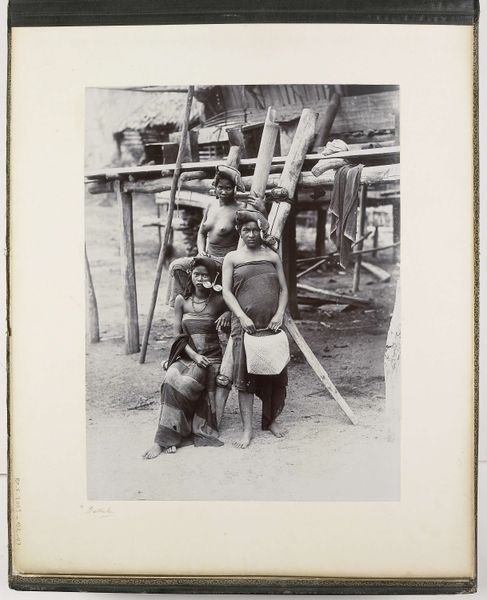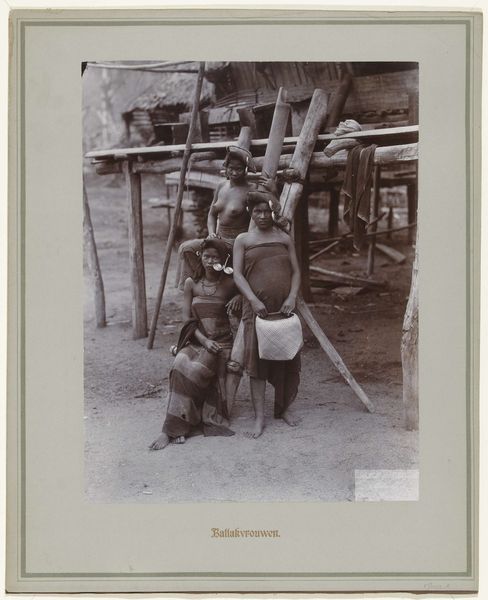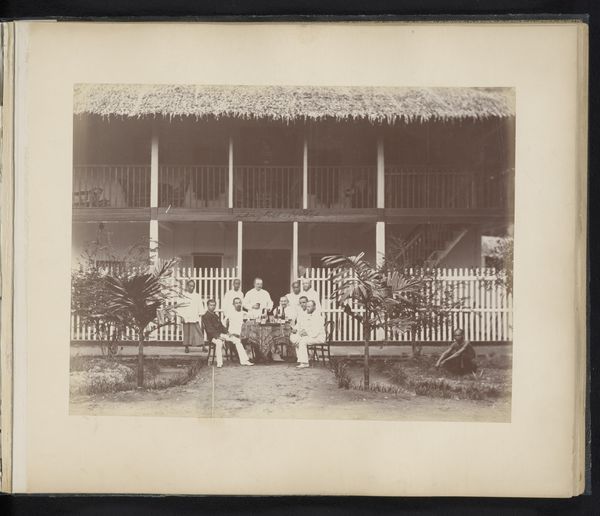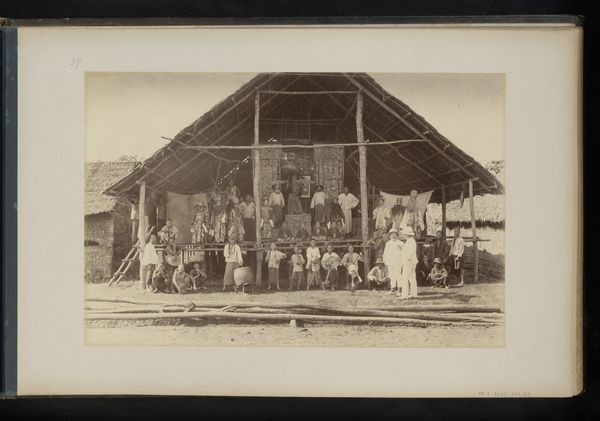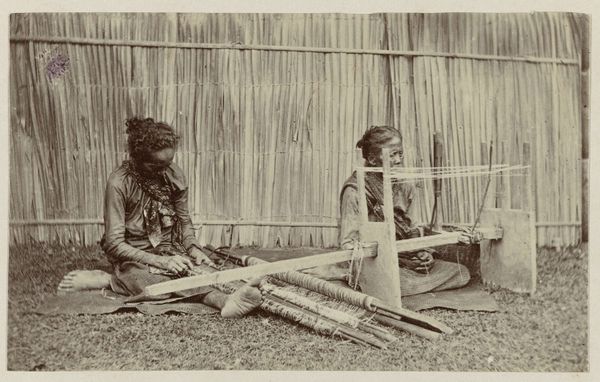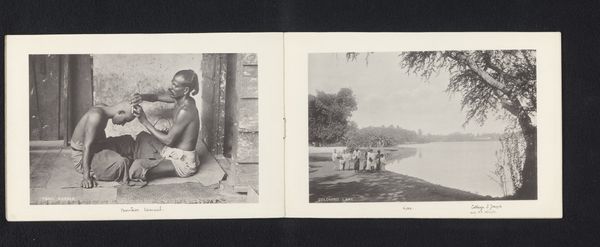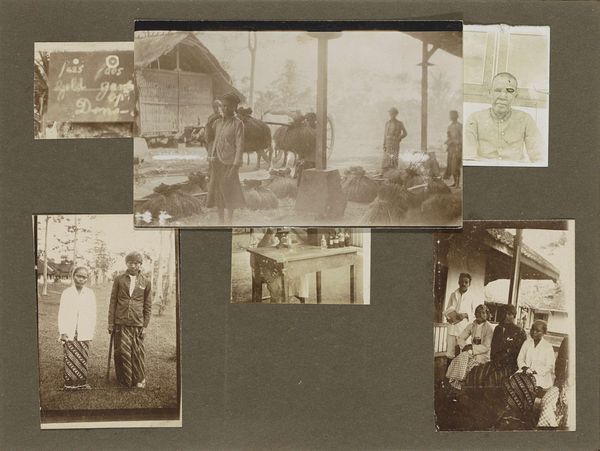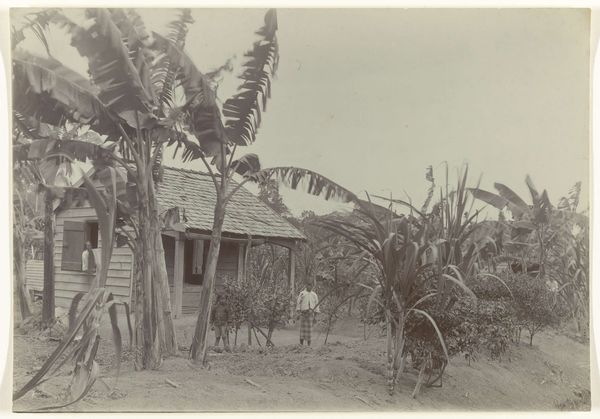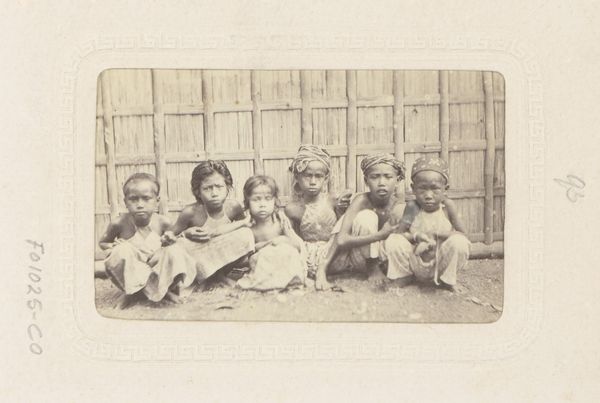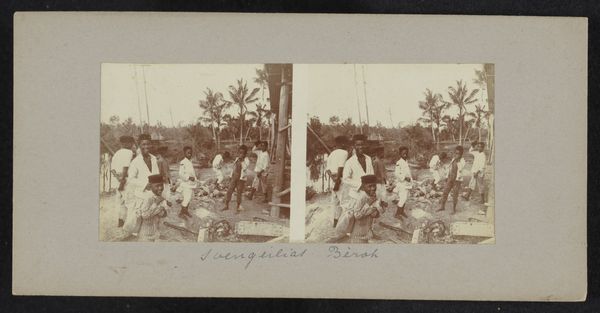
photography
#
portrait
#
african-art
#
photography
#
genre-painting
#
realism
Dimensions: height 265 mm, width 355 mm
Copyright: Rijks Museum: Open Domain
Editor: Here we have a photograph, dating from around 1890 to 1900, titled "Sumatra, contractarbeidster met Orang-Oetan," or "Contract Worker with Orangutan," attributed to Heinrich Ernst & Co. I find the contrast between the woman and the orangutan quite striking, especially with the chain around the orangutan's neck. How do you interpret this work? Curator: It's impossible to view this image without acknowledging the colonial context and its reverberations. The photograph is a powerful indictment of exploitation – both of the land, of human labour, and of wildlife in Sumatra at the time. Notice how the setting almost resembles a human zoo, mirroring how both the woman and the orangutan are positioned within systems of control. Editor: I hadn’t thought about the idea of a "human zoo" explicitly, but now I see that resemblance too. Does the composition itself say anything about the relationship between the figures? Curator: Absolutely. The woman, presumably a contract worker, stands behind the chained orangutan, which could imply complicity or perhaps the shared oppression they both endure under colonial power. Are they posed in a manner that highlights their ‘exoticism’ for a Western audience? This is photography serving the purposes of empire, documenting and reinforcing power dynamics. We need to consider who is behind the camera, and their gaze. Editor: So it’s less about a simple portrait and more about the complex intersection of colonialism, labour, and exploitation, all captured in a single frame. I'm starting to think about it as visual evidence of a deeply troubling history. Curator: Precisely. It's a stark reminder of how photographic images can perpetuate harmful ideologies, yet also, how we might use those same images to understand our shared global histories of oppression. Editor: I definitely see this image in a new light now. It's far more unsettling and complex than I initially realized. Curator: Exactly. And by confronting those unsettling aspects, we open up critical dialogues.
Comments
No comments
Be the first to comment and join the conversation on the ultimate creative platform.
